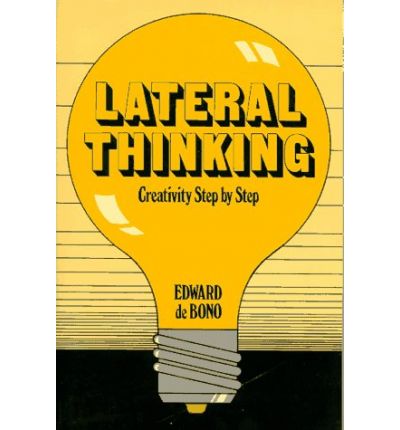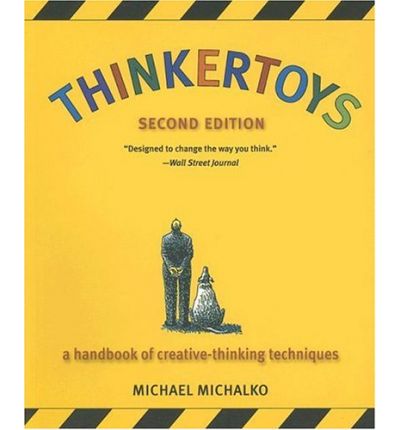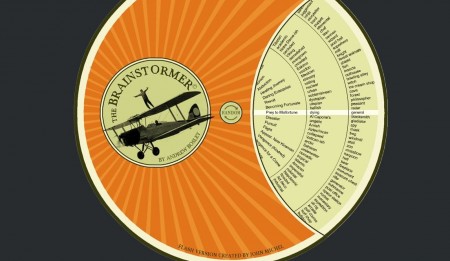Lateral Thinking For Writers
The term lateral thinking was invented by Edward de Bono in the 1960s. The basic techniques of lateral thinking involve coming up with new ideas by looking at problems in a different way and by introducing random thought stimulation.
Douglas Adams once talked about how he had got stuck writing The Hitch-Hikers’ Guide to the Galaxy. The heroes had just been thrown out of a spaceship and he needed a way of rescuing them. Given the sheer vastness of space it was exceedingly unlikely that another spaceship would be passing by in time to save Arthur and Ford. Adams couldn’t think of a plausible solution so he decided to think of it in terms of judo, where you use your opponent’s strength against them. He used the extreme unlikeliness of a rescue scenario to his advantage and invented the infinite improbability drive, which became a major plot point in the story.
De Bono has written lots of books about the subject that outline a variety of methods for generating ideas.
One of the best books I’ve read on the subject is Michael Michalko’s Thinkertoys: A Handbook of Creative-Thinking Techniques.
Although many of the examples are aimed at business (how do I think of new ways to market my widgets?) they can be easily adapted to generating new story ideas.
One of the simplest techniques is introducing a random idea and seeing how it relates to your story. For example, randomly choosing a word from a dictionary. How does this new word relate to your story?
Brainstormer is a web site and iPhone app that provides random word prompts for writers.
For example, let’s say you were writing a story about a magic sword and wanted to come up with some new ways to make the sword intersesting. (Stormbringer: the sword that drinks souls, The Misenchanted Sword that once it has been drawn has to kill someone before it can be sheathed).
You spin the dials on Brainstormer and get: Adultery, Americana, dwarf.
Hmmmm… A sword that changes size based on the wielder? A sword that ended up in a kitsch shop? A sword that guarantees its wielder will fall in love with the spouse of anyone they kill with the sword?
Another spin produces: Self-sacrifice, Viking, downtown city.
More ideas there.
Jay Lake and Ruth Nestvold wrote a great article for the Internet Review of Science Fiction calledTapping the Idea Vein.
They give the situation of taking two words and juxtaposing the ideas associated with them:
Look around the room you’re in right now. Play Sesame Streetin your head. “One of these things is not like the other…” Perhaps something in a photograph or picture on the wall, set alongside the messiest object near you. A picture of a cow and a toner cartridge, for example.
What’s the story there?
Cows symbolize agrarian civilization, food, domestication, leather goods, milk, the American family farm, fertility. A toner cartridge is color (or the soot-black lack thereof, and by extension, Manichean dualism), disposability, the Gillette model of razor marketing, the democratization of print publishing. Now we have two sets of concepts to pair together:
Agrarianism Color Food Blackness Domestication Dualism Leather Man-made materials Milk Marketing innovation American family farm Print publishing Fertility Disposability Story titles leap out from this list. “Black Milk.” “Fertile Leather.” “Disposable Fertility.” Likewise ideas, or at least their building blocks. For example, a story set on a book farm. Characters who follow a dualistic religion founded on food groups.
Another technique is reversing the problem. Perhaps you have a story where the hero’s wife is kidnapped. A simple reversal would be to have the hero kidnapped and have his wife rescue him instead. Or perhaps the hero decides to have his wife kidnapped. (Fargo). Or perhaps the hero is happy his wife has been kidnapped. (Ruthless People). Or maybe she hasn’t been kidnapped but someone keeps sending him ransom notes. (The Big Lebowski). Or maybe he finds his wife has kidnapped someone.
Some topics have been written about so often that it’s very hard to generate any new ideas. Vampires? The Simpsons had reverse vampires that could only come out during the day. Try reversing some of the stereotypes. Vampires are usually portrayed as suave and sexy (Dracula,Interview With the Vampire, etc.) or as monstrous (Nosferatu), but how about fat, white trash vampires? (Fat White Vampire Blues).
Using lateral thinking can be an excellent way to generate story ideas and solve plot problems.



I’ve heard of stand-up comedians using the Lake & Nestvold idea you mentioned.